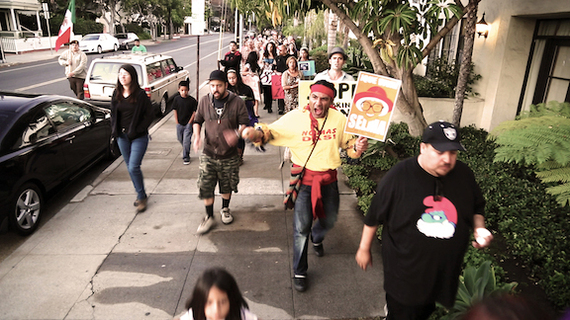Journalist Carey McWilliams published a story in The Nation magazine in June of 1979 titled "Second Thoughts," which looked at the fatal police shooting of 26-year-old Fremin Montoya in Santa Barbara, CA.
A decidedly questionable use of lethal force provoked local community organization El Concilio de la Raza to make some demands of local law enforcement including transparency and accountability. In the piece, McWilliams comes to the obvious conclusions about the need for police oversight.
On September 1, at 11:28 p.m. the Santa Barbara Police shot and killed Brian Tacadena on De La Vina Street. Tacadena had traveled a long, hard road -- rife with mental illness and addiction, by the time he got off the bus in his old home town on Labor Day weekend. He was planning on reconnecting to family.
Thirty-four years since Montoya's death, Tacadena's death raises the same questions and some new ones, like why is there is no national database and standardized reporting system for people killed by the police?
According to the FBI's Uniform Crime Report the number of "Justifiable Homicides" by police annually in the United Stated is about 400, but that number does not seem to be all-inclusive. In fact, it seems to be misleading. The Bureau of Justice Statistics says 4,813 deaths occurred during "an arrest or restraint process" Between 2003 and 2009 but it doesn't include all states.
The process of collecting and reporting data on the number of people killed by the police but is anything but clear, though it seem that there are usually about 400 a year. However what seems to be an upward trend in fatal police shootings is not yet reflected in current statistics.
Cofounder of the Center for Policing Equity, social psychologist Phillip Atiba Goff told me that, "It's not that the numbers are going up, it's that we are waking up." Goff is on point; a Google search for fatal police shooting videos returns 102,000,000 results.
Goff says part of the reason it's hard to get more standardized and aggregated data is that cops are defensive; "Holding police accountable for that information has always been the job of people whose job it is to say I don't like the police." he says.
In California, law enforcement shot and killed six men between August 31 and September 7. Half of these deaths occurred inside a 50-mile radius spanning Santa Barbara and Ventura counties.
The Tacadena family, like the Montoya family wanted answers. Late Friday afternoon they got some. The Santa Barbara District Attorney's office released their report on the Tacadena shooting finding that it was a justifiable use of force. Local community organizer Martin Leyva has announced a protest in the near future in Santa Barbara. It will be the third since Labor Day.
In his piece for The Nation, Carey McWilliams recommends ..."taking measures calculated to lift the mantle of mutual fear and hostility," to solve what he calls, "ghetto and barrio problems."
In my piece for Mission & State this week, The People vs. Brian Tacadena I delve deep into Tacadena's life, death and the final hours in an effort to make sense of a seemingly senseless death.

